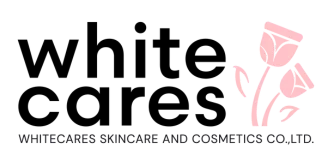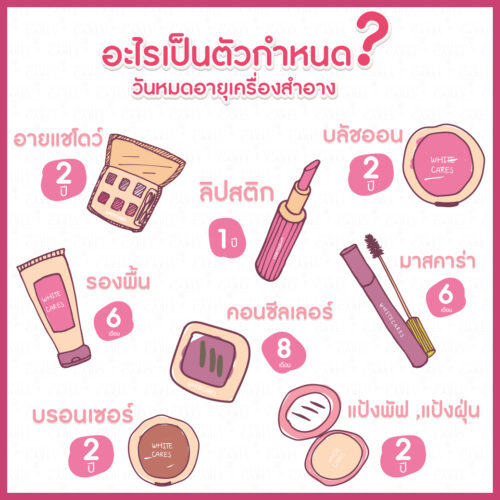
What is a cosmetic shelf life?
A product’s “cosmetic shelf life” generally means the length of time you can expect a product to look and act as expected and to stay safe for use. This length of time varies, depending on the type of product, how it is used, and how it is stored.
Have you ever wondered if Cosmetic expiration date How is it determined
Why do some products last 1 year but some are 3 years ??
Let me introduce you first These expiration dates are determined by many factors such as ingredients, method of use, and storage characteristics. Or distribution guidelines
In general, cosmetics that have passed the stability test 3-9 months will support the stability of cosmetics at 1-3 years of age, this is called Shelf life.
Continue with consideration Method of use And recipes of such cosmetics, for example, if the product does not contain water as an ingredient the shelf life will be also longer. Cosmetics for the skin area such around the eyes and lips Will last a shorter than other cosmetics. Because the skin around the eyes are very sensitive to irritation Therefore, use should take into account contamination. That may occur after being turned on than any other part
Availability and storage If cosmetics are sold in a hot and humid country, the shelf life of the cosmetics is usually short Than areas with cold weather May cause contamination in cosmetics easily in hot and humid weather, and everyone knows that cosmetics that have no expiration date are also available, such as cosmetics such as loose powder, pressed powder, powder, various powders that do not contain liquid ingredients, but we define Expiration date given, because these cosmetics, if kept for a long time, will lose some condition, slippage, sticking, efficiency)
For these reasons, we have to determine the EXP of the cosmetics. To ensure the quality of the product That meet the advertising within that period, these are just some of the factors that determine the expiration date of the cosmetics.
Test Method :
Temperature Variations: High temperature testing is now commonly used as a predictor of long-term stability. Most companies conduct their high temperature testing If a product is stored at 45oC for three months (and exhibits acceptable stability) then it should be stable at room temperature for two years.
Cycle Testing: The product should pass three cycles of temperature testing from -10o to 25o Place the product at -10o for 24 hours and place it at room temperature (25o) for 24 hours. This completes one cycle. If the product passes three cycles then you can have a good degree of confidence in the stability of the product.
Centrifuge Testing: The dispersed phase (of an oil-in-water emulsion) has a tendency to separate and rise to the top of the emulsion forming a layer of oil droplets.. A good test method to predict creaming is centrifugation. Heat the emulsion to 50o and centrifuge it for thirty minutes at 3000 rpm. Then inspect the resultant product for signs of creaming.
Light Exposure Testing: Both formulas and packaging can be sensitive to the UV radiation. All products should be placed, in glass and the actual package, in the window and if its available a light box that has a broad-spectrum output. Place another glass jar completely covered with aluminum foil in the window to serve as a control. All too often we will see significant discoloration of the product and sometimes of the package also. This discoloration may be due to the fragrance or some other sensitive ingredient. Usually all that is needed is the addition of a UV absorber .
Monitoring: For all the above mentioned tests you should monitor the color, odor / fragrance, viscosity, pH value, and, if available, particle size uniformity and/or particle agglomeration under the microscope.
Generally, unopened cosmetics last 3-5 years from the date of manufacture (MFG), most of them marked with an open jar. There are numbers and abbreviations M, which means month. That means the service life after opening, for example, 6 M means the last 6 months after opening itself. For the life of various cosmetics, it can be summarized as follows.
Expired cosmetics (EXP) within 1 year.
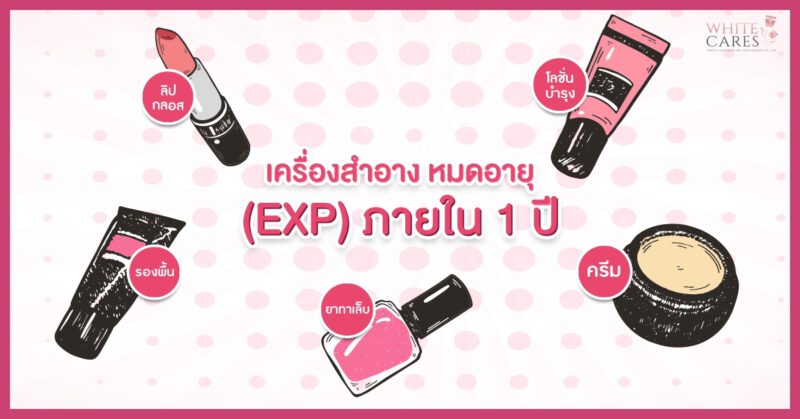
Body cream or lotion Nail polish and lip gloss
Expired cosmetics (EXP) within 2 years.
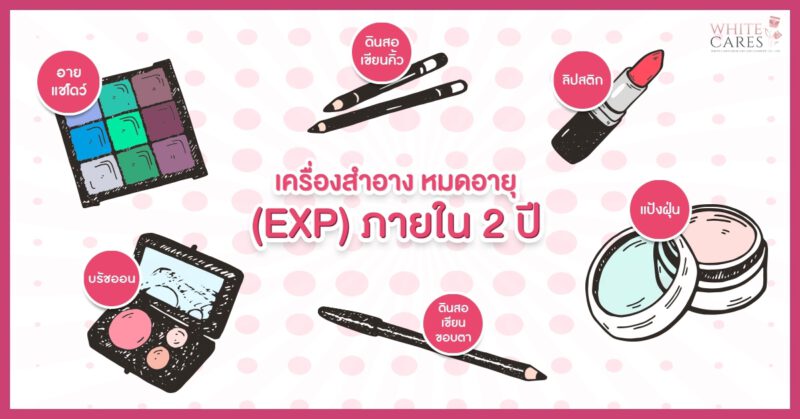
Eyeshadow, eyebrow pencil, eyeliner pencil, loose powder blush and lipstick. This type of makeup can extend its lifespan, with regular pencil sharpening and cleaning sponges.
Expired cosmetics (EXP) within 3 months.
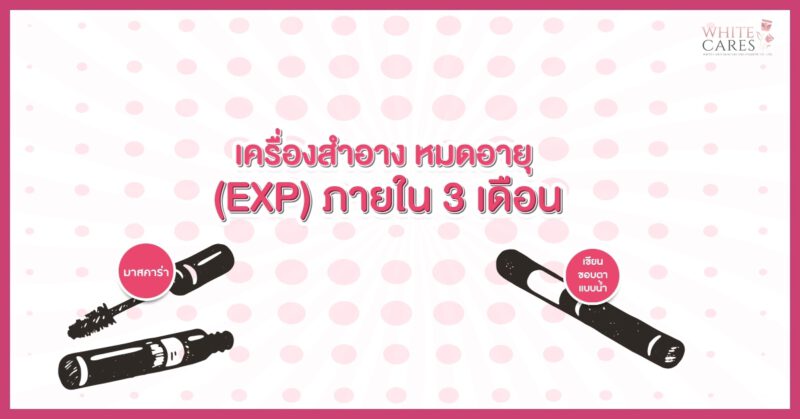
Mascara, liquid eyeliner pencil This will have a shorter lifespan than a pencil and is a source of more bacteria.
